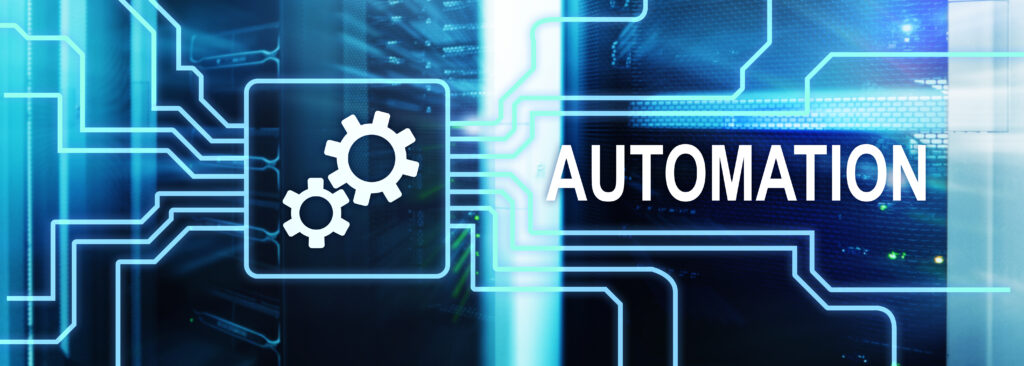Robotic Process Automation (RPA)
RPA: Transforming Business Operations!

In the age of digital transformation, businesses are continually seeking innovative solutions to optimize their processes and gain a competitive edge. Robotic Process Automation (RPA) has emerged as a game-changing technology, revolutionizing the way organizations across various industries streamline their operations.
What is Robotic Process Automation (RPA)?
Robotic Process Automation (RPA) is a technology that uses software robots or “bots” to automate rule-based, repetitive tasks and processes within digital systems. These software robots interact with user interfaces, just like humans, to execute tasks such as data entry, data extraction, process automation, and more. RPA leverages artificial intelligence and machine learning to enhance its capabilities.
Key Principles of Robotic Process Automation (RPA):
- Rule-Based Automation: RPA operates according to predefined rules and logic. Bots perform tasks based on specific instructions provided by humans.
- User Interface Interaction: RPA bots interact with the graphical user interfaces (GUIs) of applications, mimicking human actions like clicks, typing, and copying and pasting.
- No Code/Low Code: Many RPA platforms do not require extensive coding skills. They use visual workflow design interfaces that make automation accessible to a broader range of users.
- Scalability: RPA solutions can scale easily, allowing organizations to automate more processes as needed.
- Non-Invasive Integration: RPA does not require significant changes to existing IT infrastructure. It can work with legacy systems and applications.
- Data Processing and Integration: RPA can handle data extraction, processing, and integration across multiple systems and databases.
Industry Applications for Robotic Process Automation (RPA):
- Data Entry and Migration: RPA bots can quickly and accurately enter data into various systems and migrate data between applications.
- Invoice Processing: In finance and accounting, RPA automates invoice processing by extracting data, validating it, and populating accounting systems. Learn More…
- Customer Service: RPA improves customer service by automating routine inquiries, order processing, and complaint resolution.
- HR and Payroll: RPA simplifies onboarding, payroll processing, and employee record management.
- Supply Chain Management: RPA optimizes supply chain processes, including order tracking, inventory management, and vendor management.
- Healthcare: RPA can streamline administrative tasks in healthcare, such as patient registration, claims processing, and appointment scheduling.
- Compliance and Audit: RPA ensures that regulatory compliance and auditing processes are efficient and accurate.
- Data Extraction and Analysis: RPA can extract and analyze data from various sources to support decision-making.
- Report Generation: RPA generates reports by consolidating data from multiple systems, reducing the time and effort required.
- Quality Control: In manufacturing and quality assurance, RPA can perform automated inspections and data verification.
Benefits of Implementing a Robotic Process Automation (RPA) Solution:
- Enhanced Efficiency: RPA significantly reduces the time and effort required to complete routine tasks, leading to increased productivity.
- Cost Reduction: By automating labor-intensive processes, businesses can reduce operational costs and improve ROI.
- Accuracy: RPA bots perform tasks with a high degree of accuracy, minimizing errors and improving data quality.
- Scalability: RPA solutions can be easily scaled to handle an increasing volume of tasks without a proportional increase in costs.
- Increased Speed: RPA can complete tasks much faster than human counterparts, resulting in shorter process durations.
- Compliance and Audit-Readiness: RPA ensures that processes are executed consistently, contributing to regulatory compliance and audit-readiness.
- Employee Engagement: By automating repetitive tasks, employees can focus on more strategic, creative, and value-added activities, improving job satisfaction.
- Data Analytics: RPA facilitates the extraction and analysis of data from multiple sources, supporting data-driven decision-making.
What Challenges and Considerations Should an Organization Take Into Account:
- Initial Implementation: The setup and integration of RPA into existing systems can be time-consuming and may require changes to existing processes.
- Maintenance: RPA solutions need regular maintenance to keep them operating optimally, which can be an ongoing cost.
- Security and Compliance: Ensuring that RPA bots operate securely and in compliance with data protection regulations is essential.
- Process Identification: Identifying the most suitable processes for automation can be a challenge, and not all processes are suitable for RPA.
- Change Management: Employees may initially resist RPA due to fear of job displacement. Effective change management is critical.
Are You Ready for The Future of Process Automation?

Robotic Process Automation (RPA) is transforming business operations across industries by automating routine and rule-based tasks, improving efficiency, reducing costs, and enhancing data accuracy. Its flexibility, scalability, and wide-ranging applications make it a valuable asset for organizations looking to remain competitive in the rapidly evolving digital landscape. With careful planning, RPA adoption can result in substantial benefits and improved business processes. Let Image One’s professional team assist your organization with this transformation!
